How To Do A Candida Cleanse: Beginner’s Guide, Food List, Meal Plans
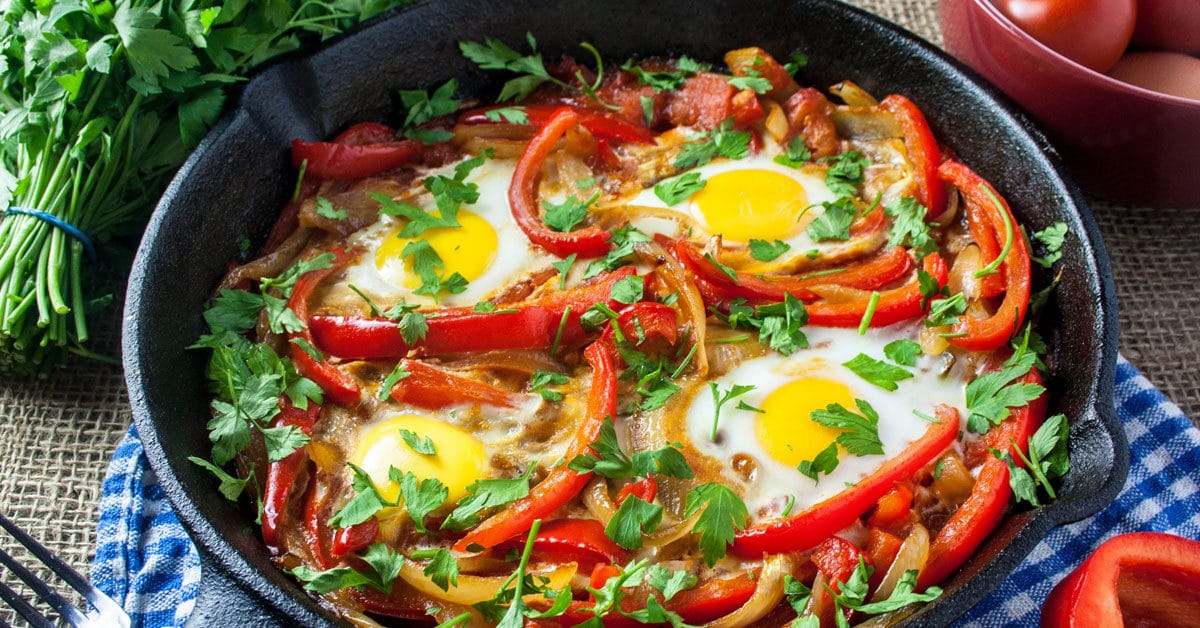
You may be surprised to know that it’s quite normal to have Candida albicans in your body. In fact, almost all of us have it in some form. When you have too much Candida albicans, it can become a problem. This is known as Candida overgrowth.
A Candida cleanse is a treatment protocol that uses a low-sugar, anti-inflammatory diet, combined with probiotics and other supplements, to reverse a Candida overgrowth.
In this article, we’ll take a look at Candida overgrowth and what causes it, list the foods to eat and avoid, share a sample meal plan, and examine the supplements you might need to complete your Candida Cleanse.
Table Of Contents
What Is Candida Overgrowth?
Candida is a species of yeast that lives naturally on and in your body. It’s a normal component of the microorganisms that live in your gastrointestinal tract. Small amounts of Candida albicans live in the warm, moist areas of your body, such as on your skin, in your gut and mouth, and in your rectum and vagina. Candida albicans even plays a part in digestion and nutrient absorption.
Usually, the population of Candida albicans is kept under control by your ‘good’ gut bacteria: the healthy microorganisms that make up the majority of your microbiome. These microbes work to keep the balance of good and bad in check. However, if Candida albicans multiplies out of control, problems begin. This can lead to overgrowth, also known as Candidiasis, thrush, or yeast infection.
Candida overgrowth can lead to infections that cause pain and inflammation throughout the body, usually on the skin, in the gut and the genitals. If left untreated, Candida microbes can even break down the walls of the intestine and release toxic by-products into your body, which may lead to many different health issues, from digestive disorders to depression. (1)
The symptoms of Candida overgrowth often show as skin, mouth and vaginal infections. Candida overgrowth is also is a common cause of diaper rash. These skin infections are often a sign of an imbalanced gut. If the yeast overgrowth in the gut is left untreated, these other Candida infections are likely to recur.
The symptoms of Candida include:
- Fatigue
- Brain Fog
- Digestive Issues
- Recurring Yeast Infections
- Oral Thrush
- Sinus Infections
- Food Sensitivities
- Fungal Infections On Skin Or Nails
- Weak Immunity
- Joint Pain
- Low Mood
What Causes Candida Overgrowth?
Although it’s the job of your ‘good’ gut bacteria to keep your Candida levels under control, sometimes they aren’t able to function as effectively as they should. If these bacteria are weakened in any way – whether through antibiotics, illness, or poor diet – they may fail to keep pathogens like Candida at bay.
Candida overgrowth is especially common among those who regularly eat large amounts of refined carbohydrates and sugar.
In some cases, your body may be lacking in beneficial bacteria due to antibiotics, the oral contraceptive pill, and other medications that can decimate your healthy bacteria. Chronic stress can also upset a healthy gut.
In all these cases, Candida yeast population may quickly get out of hand and become harder and harder to treat.
The really tricky thing about Candida is that it can adapt quite quickly to spread and protect itself from your immune system. It transforms from a rounded yeast cell into an elongated hyphal cell, which allows it to cope with a change in temperature or varying acidity levels. An elongated cell is also better able to break through the gut lining. (2)
Over time, this ability to penetrate the intestinal wall can lead to another health problem known as Leaky Gut Syndrome. If Candida succeeds in breaking through the gut lining, it may even allow toxins and food particles from your gut to enter the bloodstream.
The causes of Candida overgrowth include:
- A High-Sugar Diet
- Antibiotics
- Chronic Stress
- The Contraceptive Pill
- Heavy Metal Exposure
- Chemical Exposure
- Diabetes
The Benefits Of Doing A Candida Cleanse
With all the problems that Candida overgrowth can cause, it’s not surprising that many health practitioners recommend a Candida cleanse! And fortunately, this isn’t as difficult as it might sound.
There are lots of different ways to do a Candida cleanse, but the most effective result will be achieved through targeting all areas of your body that may have been affected by the overgrowth. This includes your gut, which is often colonized by Candida albicans, and your liver, which has to process and eliminate the toxins produced by the yeast overgrowth.
Here are some of the benefits of doing a Candida cleanse:
- A rebalanced gut microbiome
- Better immune function
- Improved digestion
- Lower inflammation
- Improved mood
- Higher energy levels
Foods To Eat On Your Candida Cleanse
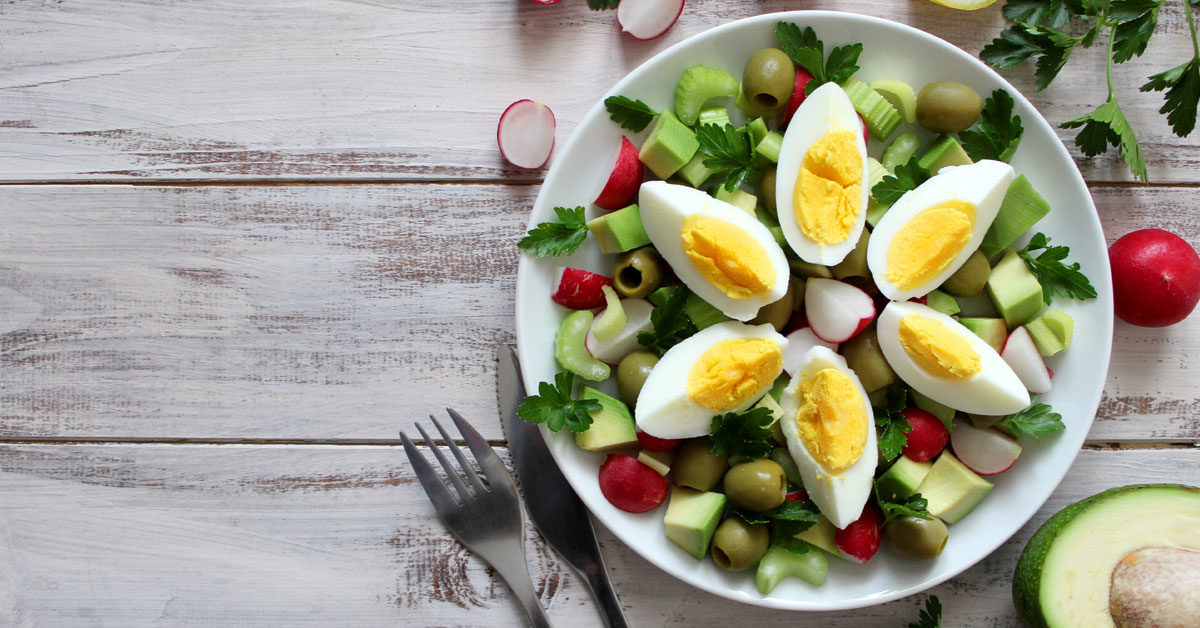
During your Candida cleanse diet, you should eat healthy, nutritious foods that are easy to digest.
Avoid foods that are high in sugars, pro-inflammatory, or difficult to digest. Instead, fill your diet with foods like non-starchy vegetables, low-sugar fruits, non-glutenous grains, healthy fats and proteins.
While this may be more limited than your usual diet, you can include a variety of herbs, spices, oils, and other cooking ingredients to create some delicious meals with lots of nutritional benefits! What’s more, these foods will begin the process of healing your gut, reducing inflammation, boosting nutrient absorption, and rebalancing your gut flora.
These are three types of foods that we recommend you eat while on your Candida cleanse diet:
1. Low-Sugar Foods
Reducing your sugar intake is the first step in beating Candida. Candida albicans relies on sugar to grow, reproduce and create the biofilms that protect it from your immune cells, so it makes sense to keep sugar out of your diet as much as possible.
While it may sound impossible to avoid all sugar, it’s important that you at least begin investigating the sugar content of the foods you do eat. You’ll soon find that there are lots of hidden sugars in foods you wouldn’t consider to be treats, such as condiments, fruit and processed snacks.
Low sugar foods that are acceptable on a Candida cleanse include non-starchy vegetables, some fruits (such as berries), non-glutenous grains, lean proteins, oils, and herbs.
The good news is that once you cut down your sugar intake, you’ll actually find that you crave sugar less! That’s partly because you’ll be starving the Candida yeast of its main source of fuel.
2. Non-Glutenous Grains
Keeping gluten out of your diet can improve your gut health, lower inflammation, and reduce the symptoms of your Candida overgrowth.
White breads, white pasta, and most cereals contain gluten, which causes chronic inflammation in the gut and destroys the bond between the cells lining your intestinal wall.
Our list of Candida diet foods contains only gluten-free grains and pseudo-grains such as buckwheat, quinoa, teff and millet.
Non-starchy vegetables are naturally gluten-free, and can be substituted for some grains in recipes where they provide a similar texture. For example, it’s possible to make a pasta substitute out of zucchini!
You can also substitute most flours for gluten-free alternatives, such as chickpea flour, almond flour or buckwheat flour.
3. Anti-Inflammatory Foods
Reducing inflammation is one of the key objectives of the Candida cleanse diet. That’s why it’s vital that you not only avoid processed foods, minimize sugar, and reduce your caffeinated drinks, but also that you include lots of anti-inflammatory foods in your daily diet.
Many of the best-known anti-inflammatory foods are quite safe to eat on the Candida Cleanse. In fact, nutritionists believe that one of the most powerful tools to combat inflammation is not from pills, but from what you put on your plate!
Many studies have found that certain components of foods or beverages can have powerful anti-inflammatory effects on the body. These will help your body to recover faster from Candida.
Some of the best anti-inflammatory foods include olive oil, green leafy vegetables (such as spinach, kale, and collards), raw nuts and seeds (such as almonds and walnuts), fatty fish (salmon, mackerel, and sardines) and low-sugar fruits (blueberries, cherries and raspberries). (3)
Foods To Avoid On Your Candida Cleanse
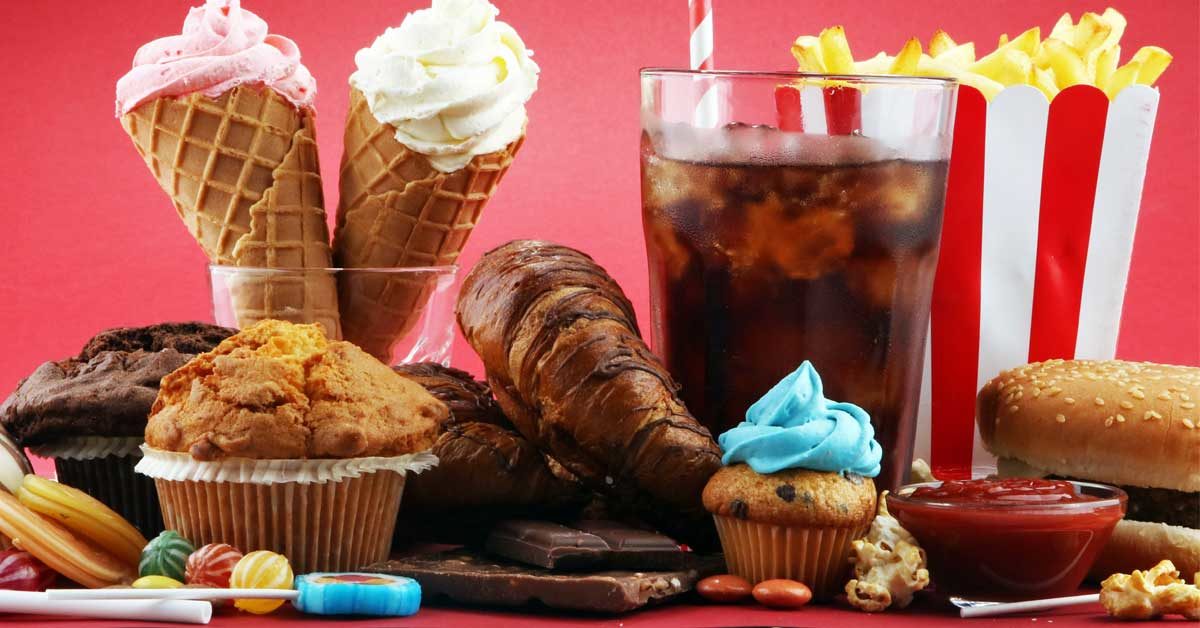
As you may have already realized, it’s what you DON’T eat that matters most on a Candida cleanse! Improving the health of your gut means eliminating the foods that ‘feed’ the Candida yeast or worsen inflammation.
The following categories of foods should be avoided on the Candida Cleanse for one of three very important factors – sugar, gluten, and inflammation.
1. Foods That Are High In Sugar
Most of us love a sugar fix – but unfortunately, Candida does too! Sugar provides Candida with the energy it needs to develop, grow and spread throughout your body.
Sugar also allows Candida to build special protective biofilms that function as a kind of protective shield for the yeast cells, so they can ‘hide’ from your immune cells. These biofilms are actually composed of 32% glucose. (4)
It’s been found that the presence of extra sugar in the bloodstream can allow yeast to colonize more readily.
If your blood glucose levels are consistently high, your body may release extra sugar into your mucus, sweat and urine. The areas of your body where Candida thrives are generally where these bodily fluids are released.
And when the Candida yeast has colonized in a certain area, there’s a higher chance it will return – unless you cut it out completely.
Foods that are particularly high in sugar include fruit juices, candy, desserts, cereals, and dried fruit. There are many forms of sugar that appear in our foods – check the ingredients label carefully and be sure to understand exactly what you’re eating.
2. Foods That Contain Gluten
Even if you don’t suffer from celiac disease or gluten intolerance, you should still avoid gluten while on your Candida cleanse.
Research shows that gluten has the tendency to cause inflammation in the gut and increase the risk of intestinal permeability. It can also worsen the symptoms of irritable bowel syndrome and Candida overgrowth. (5)
Gluten stimulates the release of a protein called zonulin, which damages the gut lining by loosening the junctions between cells in the gut. (6)
It’s been found that people who don’t appear to be sensitive to gluten may still suffer from inflammation when they eat wheat, due to the amylase trypsin inhibitors (ATIs) in wheat. These can cause an inflammatory immune response in the GI tract by provoking immune cells. (7)
Unsurprisingly, all glutenous grains are excluded from the Candida cleanse! You should avoid wheat, barley, and rye. Many breads, cereals, and other foods also contain added gluten, so watch out for those too.
3. Pro-Inflammatory Foods
Along with gluten and sugar, a number of other foods common to the Western diet are also known to cause inflammation in the gut.
The worst offenders include refined vegetable oils, which contain high levels of pro-inflammatory omega-6 fatty acids. If these Omega 6 fatty acids get out of balance with anti-inflammatory Omega 3 fatty acids, they can cause an increase in inflammatory markers in the body. Unfortunately, many of the foods we eat are high in Omega 6. (8)
Alcohol and caffeine also promote inflammation in the body and irritate the gut lining.
Processed foods that contain artificial additives should be avoided too. That includes processed meats, trans fats (commonly found in fried foods), white breads and pasta, soybean oil and processed snack foods such as chips. (9)
Sample Meal plan
Here is a 3-day, sample meal plan for the Candida cleanse. You can find lots more Candida recipes in our recipe section.
Day 1
Breakfast: Avocado Baked Eggs with Vegetable Hash
Lunch: Chicken Piccata
Dinner: Vegan Cauliflower Curry
Day 2
Breakfast: Turkey and Sage Breakfast Patties
Lunch: Cool Sardine Salad
Dinner: Mindful Veggie Bowl
Day 3
Breakfast: Avocado Pancakes With Lemon Parsley Butter
Lunch: Mediterranean Zucchini Dip With Vegetables
Dinner: Green Chili Chicken Stew
Supplements To Take On Your Candida Cleanse
Several supplements can help you on your journey to beating Candida. Between them, they help to eliminate Candida toxin, restore your gut flora, and inhibit the growth of Candida albicans.
These are the supplements that you need for a Candida cleanse:
- A detox supplement
- A probiotic
- An antifungal
Let’s take a look at those in more detail.
1. A Detox Supplement To Reduce Your Candida Symptoms
As well as eating a clean and healthy diet, there’s another important aspect of the Candida Cleanse: detox. It’s vital that you support your body’s detoxification pathways in order to help flush out those Candida toxins, prevent a die-off reaction from occurring, and reduce your Candida symptoms.
When the Candida yeast is being ‘killed off’, it can put up quite a fight – and your organs and immune system may bear the brunt of this damage. Some of the symptoms you experience at this point can include fatigue, headaches and nausea.
These symptoms are known as Candida Die-Off, or alternatively the Herxheimer reaction, and will usually diminish within a week or two. In some cases, they can continue a little longer.
Die-off happens as Candida cells break down and release large amounts of their endotoxins, all at once. As well as the unpleasant effects that these toxins can have on your body, Die-off can also place a significant amount of stress on your liver.
The good news is that there are many natural supplements that can assist your liver in processing and expelling these toxins.
A liver support supplement can make a huge difference to your recovery. Look for a high-quality supplement that contains a range of natural, liver-supportive herbs.
Milk thistle, molybdenum, and NAC are some of the best-researched natural medicines for boosting your liver’s functioning capacity. They can also help to flush out Candida-related toxins.
Molybdenum is especially useful, as it helps your body to produce enzymes that convert the neurotoxin acetaldehyde into acetic acids. These acids can then be flushed out of the body, or else converted into helpful digestive enzymes.
When it comes to plant-based liver support, you can’t go wrong with milk thistle. This powerful herb is renowned for its ability to protect the liver and support your body’s detoxification pathways.
Milk thistle’s seeds contain a powerful flavonoid called silymarin, which is a potent antioxidant and one of nature’s most potent liver purifiers. Silymarin has been found to optimize liver function and detoxification, while also helping to repair damage to liver cells from disease, alcohol, and drugs. (10)
One of the ways in which milk thistle works is by increasing production of glutathione, your body’s most important antioxidant. Glutathione helps to ward off damage from free radicals that are generated by our environment or from within the gut. (11)
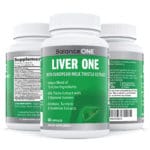 The detox supplement that we recommend is Liver One by Balance ONE. It contains standardized European milk thistle extract, molybdenum, and a range of other liver-supportive ingredients.
The detox supplement that we recommend is Liver One by Balance ONE. It contains standardized European milk thistle extract, molybdenum, and a range of other liver-supportive ingredients.
Liver One was formulated especially for Candida sufferers, and it’s the only detox supplement that we recommend.
2. A Probiotic To Restore Your Gut Microbiome
Did you know that up to 70 percent of your immune tissue is in your gut? (12)
Your immunity can really suffer when your body is trying to fight off a gut infection like Candida overgrowth. Restoring your healthy gut bacteria should be a priority in order to get your immunity back up and running. The most effective way to do this is by taking a high-quality probiotic supplement.
Here are two of the top probiotic strains for restoring gut microbiome:
Lactobacillus Plantarum
L. plantarum is a powerful strain of probiotic bacteria that has been shown to support immune health in a variety of ways. It is highly adhesive, which means it ‘clings’ to the intestinal wall and helps to promote gut healing. It’s also very good at fighting pathogenic bacteria and yeast that cause us problems, particularly E. coli and Candida albicans. (13)
L. plantarum works by protecting the membrane that surrounds your gut. This makes it particularly helpful if you have any irritation or damage to your gut lining.
Studies have found that L. plantarum is particularly resilient and can survive the harsh environment of the gut, even alongside antibiotic treatment. If you need to take antibiotics and want to avoid overgrowth of yeast, L. plantarum is a good choice.
Lactobacillus acidophilus
Lactobacillus acidophilusis perhaps the most well-known and well-researched of probiotic bacteria. It displays remarkable potency in the battle against Candida and has been shown to significantly inhibit the rate at which the yeast grows. This is one of most effective probiotic bacteria against Candida albicans. (14,15)
L. acidophilus produces lactic acid as a byproduct of its metabolism. This helps to regulate acidity in your gut, boost your immune system, and prevent Candida albicans from switching to its fungal form (it needs an alkaline environment to do this).
This remarkable microbe has also been found to lower cholesterol, prevent and treat diarrhea, negate the effects of irritable bowel syndrome, promote weight loss, lessen the symptoms of colds and flu, reduce allergies and eczema, and is an excellent bacterium for improving gut health.
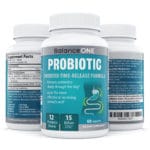 Our recommended probiotic for Candida is the Balance ONE Probiotic. It uses time-release tablets to get 15 times as many probiotic bacteria past the stomach acid barrier and to your gut. It contains 15 billion CFUs of bacteria, has 12 probiotic strains, and is made in the USA. It’s the only probiotic that we recommend for Candida overgrowth.
Our recommended probiotic for Candida is the Balance ONE Probiotic. It uses time-release tablets to get 15 times as many probiotic bacteria past the stomach acid barrier and to your gut. It contains 15 billion CFUs of bacteria, has 12 probiotic strains, and is made in the USA. It’s the only probiotic that we recommend for Candida overgrowth.
3. An Antifungal To Fight The Candida Overgrowth
Candida is a virulent pathogen that is particularly difficult to dislodge from your intestinal walls. Antifungals help to break down the biofilms that it creates and give your immune system the best possible chance to eliminate it.
There are only a handful of prescription antifungals that can help with a Candida overgrowth. Unfortunately, they tend to come with some nasty side effects.
This is because yeast and fungal cells are quite similar to human cells, making it difficult to create a treatment that targets the ‘bad guys’ and not the ‘good guys’. For this reason, natural antifungals are often the best option for Candida sufferers.
Caprylic Acid
This supplement is a powerful antifungal that comes in capsule form. It’s one of the antifungals most often used in Candida treatment. It is derived from coconut oil, which contains caprylic acid and two other antifungal compounds.
Caprylic acid can help in two ways: its ability to kill Candida cells, and the way that it restores normal acidity levels in the gut. Taking caprylic acid during your treatment can get your intestinal tract back in shape and help to inhibit or reverse your intestinal Candidiasis. (19)
Berberine
Research shows that berberine extract has substantial antimicrobial activity against a range of pathogens that include bacteria, viruses, protozoa, fungi, and yeasts. Berberine is highly effective against Candida albicans in various studies.
Berberine has also been proven to be selective in its effects. This means that it can target Candida, and yet does not harm the beneficial microbes, including Lactobacilli and Bifidobacteria species, that we wish to encourage as part of a healthy microbiome.
Undecylenic Acid
This natural fatty acid inhibits the hyphal growth of Candida albicans and biofilm formation. These factors play a major part in the development of skin infections, and also in Candida’s ability to spread throughout the body.
Undecylenic acid is able to both inhibit the biofilm formation of Candida albicans and interrupt its ability to transition from yeast to its fungal phase.
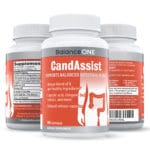 Our recommended antifungal for Candida is Balance ONE CandAssist. It contains powerful natural antifungals, including oregano leaf extract and caprylic acid, and it uses delayed-release capsules to get those antifungals safely to your gut. It’s vegetarian, non-GMO, and made in the USA. It’s the best candida cleanse to fight Candida overgrowth.
Our recommended antifungal for Candida is Balance ONE CandAssist. It contains powerful natural antifungals, including oregano leaf extract and caprylic acid, and it uses delayed-release capsules to get those antifungals safely to your gut. It’s vegetarian, non-GMO, and made in the USA. It’s the best candida cleanse to fight Candida overgrowth.
Now It’s Time To Fight Your Candida!
A Candida cleanse is one of the best ways to address Candida overgrowth. With the right foods and supplements, you’ll be on your way to beating that yeast and feeling fantastic again!
Here are the most important steps in your Candida cleanse:
- Follow a low-sugar, anti-inflammatory diet to boost your immunity and starve the Candida yeast.
- Take a detox supplement to support your liver and reduce your Candida symptoms.
- Use a high-quality probiotic supplement to restore your gut flora.
- Take a natural antifungal to inhibit and reverse the Candida overgrowth.
If you’d like to learn more about how to create your own Candida treatment plan, check out our Ultimate Candida Diet program. It contains more than 100 sugar-free, gluten-free recipes, as well as lots of detailed advice on the best foods and supplements to beat Candida.
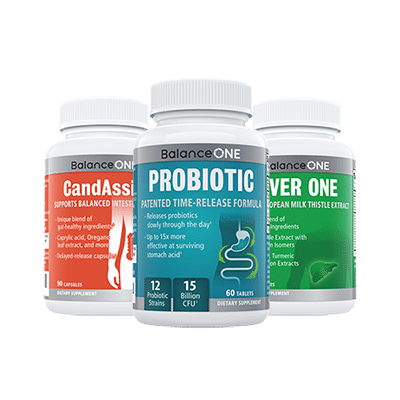
3-Month Candida Elimination Kit Start Your 3-month Candida Cleanse
This Candida Kit contains all the supplements recommended on the Candida Diet:
- LIVER ONE to process and remove the toxins created by Candida.
- CANDASSIST to inhibit and weaken the Candida colonies in your gut.
- PROBIOTIC to replace the Candida yeast with probiotic bacteria.
Plus... the CANDIDA DIET RECIPE BOOK with 50+ low-sugar recipes

Why is your probiotic in a tablet form. Is there one you would recommend in capsule form?
Would appreciate a return phone call
Thank you!
Great question! The biggest difference between our probiotic and most other brands is the way that we get our live bacteria to your gut.
Most probiotic brands use vegetable capsules that deliver only around 4% of their bacteria safely to the gut. That’s because the veggie capsules are quickly broken down in your stomach, and the live bacteria are then exposed to your stomach acid. Probiotic bacteria are sensitive to this highly acidic environment and most of them are killed before passing through to your intestines.
To solve this problem, we compress our bacteria into special time-release tablets. When these come into contact with moisture, they form a protective gel coating that keeps the bacteria safe in your stomach. Then, when the tablet passes through to your intestines, the bacteria are slowly released over 8-10 hours.
Tests using simulated stomach acid have shown that this method safely delivers at least 15 times more bacteria, when compared to regular vegetable capsules.
Our probiotic also has 12 strains chosen for their impact on digestion and immunity, and a total of 15 billion CFUs of bacteria.
If you have any more questions, just let me know 🙂